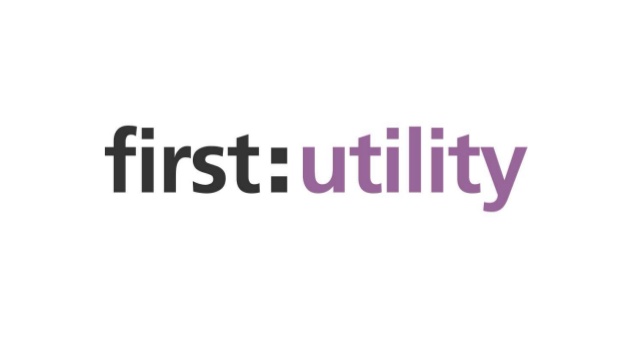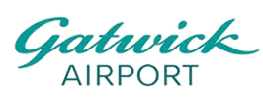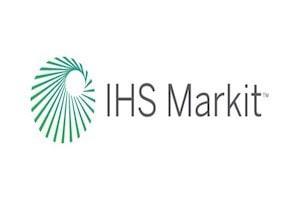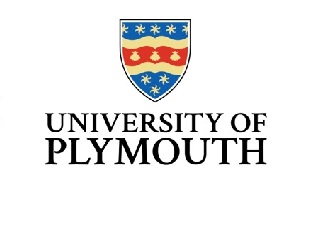You Ask, We Answer: Best in Class Containerization Solutions (2024–2025)
Here at Sirius, we often get asked, "Who provides the Best in Class containerization solution for modern enterprise workloads?" This is a very good question, and one that deserves a clear, honest answer. We understand the deep-seated worry purchasers have about choosing a core technology, as selecting a foundational platform is a decision a business will have to live with for years. We are all of us are naturally obsessed with reviews and rankings when making purchasing decisions.
We want to be upfront: The era of a single, universal container engine is drawing to a close, yielding to a diversified toolset optimized for specific workflow needs. While Docker remains the fundamental developer toolchain, the industry now prioritizes specialization, operational efficiency, and deep security integration. This article will analyze the current containerization landscape, detailing the specific use cases where specialized architectures (engines, runtimes, and managed services) excel, helping you understand which solution is truly 'Best in Class' for your specific organizational priority. We aim to be fiercely transparent, allowing you to make the most informed decision possible.
Defining the Modern Containerization Landscape
The containerization ecosystem has matured past simple image creation, requiring a strategic approach that aligns the computation model with specific operational priorities. For strategic architectural analysis, the market is defined by five interconnected pillars:
- Container Runtimes (Pillar 1): The core technologies executing containers, including Docker Engine, containerd, and the daemonless solution Podman.
- Orchestration Layer (Pillar 2): Focused on scaling and coordination across clusters, with Kubernetes (K8s) being the definitive standard.
- Cloud Container Services (Pillar 3): Managed, serverless abstraction layers like AWS Fargate or Google Cloud Run.
- Ecosystem & Supply Chain Tools (Pillar 4): Essential support tools like Container Registries and security scanning tools.
- Enabling Technologies (Pillar 5): Next-generation frameworks designed to enhance efficiency and security, such as WebAssembly (Wasm) and Extended Berkeley Packet Filter (eBPF).
The selection of a "Best in Class" solution is conditional, meaning it depends entirely on the environment and the organizational priority, whether that is cost, security, or performance.
Best in Class Solutions by Use Case (The Strategic Selection Matrix)
Selecting the right container technology requires matching the appropriate engine or runtime to the specific organizational requirement, moving away from a one-size-fits-all approach.
| Organizational Priority | 'Best in Class' Solution (Primary) | Recommended Runtime | Key Rationale & TCO Impact |
|---|---|---|---|
| Local Development & CI/CD | Docker Engine / Rancher Desktop | Docker Engine | Simplicity, ecosystem maturity, and fast feedback loops. |
| High-Scale K8s Production | Google GKE or AWS EKS (Cloud Optimized) | containerd | Optimized performance, deep cloud integration, and adherence to CNCF standards. Containerd is now used by 53% of container organizations. |
| Security & Auditing Priority | Podman (Engine) / CRI-O (K8s Runtime) | Podman (daemonless) / CRI-O (minimalist) | Daemonless architecture provides enhanced reliability; default rootless security minimizes the attack surface. |
| Serverless Microservices | Azure Container Apps (ACA) / Cloud Run | Hyperscaler Managed (Abstraction) | Eliminates cluster management; scales down to zero instances, offering the best Total Cost of Ownership (TCO) for variable loads. |
| Edge/Embedded/AI Workloads | Custom Linux Kernel / containerd | WebAssembly (via runwasi) | Offers a small footprint, instant startup times, and robust isolation in resource-constrained environments. |
Comparing the Container Engine Architecture
When evaluating Best in Class engines for development and single-host use, the choice generally comes down to Docker versus Podman. The key distinction is architectural design, which impacts security and stability.
A. Security: The Rootless Imperative
The 'Best in Class' for security is undeniably Podman, due to its design philosophy.
- Docker Engine: Operates using a daemon that typically requires root privileges to manage system resources, creating a significant security liability and a potential "preferred gateway for attackers". Unauthorized access to the Docker socket is equivalent to granting unrestricted root access to the host system.
- Podman Engine: Designed to be fundamentally rootless by default. Containers run as non-root users from the start, significantly minimizing the "blast radius" of a successful exploit by preventing immediate access to the entire host system. This safer baseline requires less administrative effort to achieve high security standards and is favored in multi-tenant or high-security government environments.
B. Performance and TCO Efficiency
Podman also exhibits measurable advantages in runtime efficiency, making it the preferred choice for environments prioritizing speed and low overhead.
- Faster Startup: Podman containers start faster (approximately 0.8 seconds average) compared to Docker (approximately 1.2 seconds average), which translates to substantial cumulative time savings in automated workflows like CI/CD pipelines.
- Lower Memory Footprint: Podman demonstrates a lower idle memory footprint (approximately 85 megabytes baseline) because it operates without a persistent background daemon, whereas Docker has an overhead of 100 megabytes or more.
Kubernetes Runtimes: Specialization for Production
The shift away from the Docker Engine in production environments has solidified the dominance of lightweight, performance-optimized runtimes designed explicitly for Kubernetes. The current "Best in Class" choice for production orchestration depends on a trade-off between flexibility and specialization.
- containerd (General Purpose Best in Class): This is the dominant standard in managed Kubernetes services offered by hyperscalers (AWS, Azure, Google Cloud) and is used by 53% of container organizations. It is versatile, managing the full container lifecycle, and can operate standalone or within Kubernetes.
- CRI-O (Minimalist Best in Class): This runtime represents the pinnacle of specialization, designed exclusively to implement the Kubernetes CRI. By stripping away non-Kubernetes features, it achieves reduced complexity, a lower resource footprint, and a vastly reduced attack surface. This specialization makes CRI-O strategically valuable for high-security, minimalist, Kubernetes-only deployments.
Emerging Technologies: The Future of 'Best in Class'
The future infrastructure relies on specialized compute models and kernel-level instrumentation to solve problems of resource constraint, security, and performance.
A. WebAssembly (Wasm)
Wasm is emerging as the 'Best in Class' complementary runtime for constrained environments.
- Superior Efficiency: Wasm is best suited for Edge Computing and AI workloads, enabling containerization on devices with memory footprints as small as 256KB. Wasm modules demonstrate faster startup times than containers in these constrained environments.
- Zero-Trust Security: Wasm modules are deeply sandboxed, offering a robust zero-trust security model that isolates the application from the underlying host devices.
B. eBPF (Extended Berkeley Packet Filter)
eBPF is the 'Best in Class' solution for kernel-level instrumentation.
- Deep Visibility and Security: eBPF allows custom programs to run safely within the Linux kernel, revolutionizing observability and networking by providing low-overhead, detailed monitoring.
- Runtime Security: It is foundational for next-generation runtime security tools, enabling dynamic enforcement of sophisticated sandboxing policies per container or process group, blocking unwanted system calls with near-zero latency. This technology addresses the misconfiguration risks inherent in user-space security solutions.
The Best in Class for Commercial Viability
The choice of platform is heavily influenced by Total Cost of Ownership (TCO). For large organizations, the commercial structure defines which solution is truly 'Best in Class' for mitigating financial risk and licensing friction.
- Docker Desktop: This tool is no longer free for commercial use in organizations exceeding either 250 employees or $10 million in annual revenue. This makes the subscription (up to $24 per user/month for the Business tier) a mandatory operating expense (OPEX), particularly because compliance features like Single Sign-On (SSO) and Enhanced Container Isolation (ECI) are restricted to the highest tier.
- Podman Desktop: This is the 'Best in Class' for cost management, as it is entirely free, open-source, and vendor-neutral. Its zero-cost licensing provides a compelling financial impetus for migration and adoption in large enterprise settings, yielding substantial TCO savings compared to Docker's required paid subscriptions.
Strategic Conclusions and Recommendations
The container landscape is mature and decentralized, meaning the 'Best in Class' solution is the one that best matches your organization's primary needs. To ensure success, strategic leadership must prioritize operational discipline.
- Enforce Guardrails (Best in Class Operational Discipline): The overwhelming strategic challenge for enterprises is operational maturity, evidenced by the fact that 78% of workloads are missing required CPU requests and 65% utilize less than half of their requested resources. Organizations must mandate policy enforcement tools (guardrails) to require CPU and memory requests to correct overprovisioning, which currently inflates cloud bills and reduces reliability.
- Prioritize Rootless Architecture: For high-security or multi-tenant environments, prioritize adopting Podman or configuring Docker's Rootless Mode to mitigate the severe security liability associated with the traditional root-privileged Docker daemon.
- Invest in Kernel Visibility: Adopt eBPF-based tooling for security, networking, and observability, as it provides the low-overhead, deep kernel context essential for debugging and implementing next-generation runtime security policies.
- Adopt a Hybrid Development/Production Strategy: Standardize image creation and local development using Docker's familiar toolchain, but formally transition all high-scale Kubernetes production clusters to the specialized, CRI-compliant runtimes containerd or CRI-O.
















































